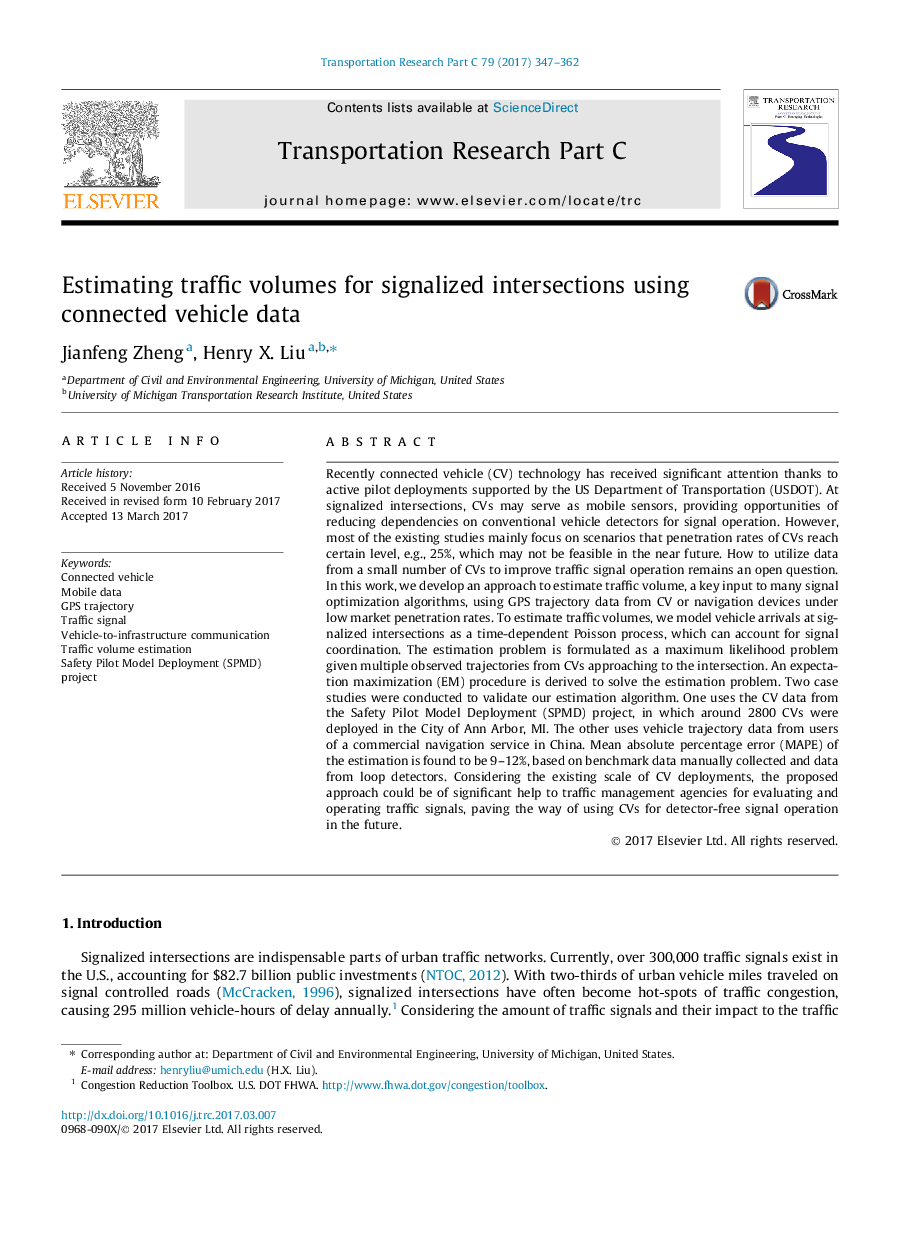| Article ID | Journal | Published Year | Pages | File Type |
|---|---|---|---|---|
| 4968570 | Transportation Research Part C: Emerging Technologies | 2017 | 16 Pages |
Abstract
Recently connected vehicle (CV) technology has received significant attention thanks to active pilot deployments supported by the US Department of Transportation (USDOT). At signalized intersections, CVs may serve as mobile sensors, providing opportunities of reducing dependencies on conventional vehicle detectors for signal operation. However, most of the existing studies mainly focus on scenarios that penetration rates of CVs reach certain level, e.g., 25%, which may not be feasible in the near future. How to utilize data from a small number of CVs to improve traffic signal operation remains an open question. In this work, we develop an approach to estimate traffic volume, a key input to many signal optimization algorithms, using GPS trajectory data from CV or navigation devices under low market penetration rates. To estimate traffic volumes, we model vehicle arrivals at signalized intersections as a time-dependent Poisson process, which can account for signal coordination. The estimation problem is formulated as a maximum likelihood problem given multiple observed trajectories from CVs approaching to the intersection. An expectation maximization (EM) procedure is derived to solve the estimation problem. Two case studies were conducted to validate our estimation algorithm. One uses the CV data from the Safety Pilot Model Deployment (SPMD) project, in which around 2800 CVs were deployed in the City of Ann Arbor, MI. The other uses vehicle trajectory data from users of a commercial navigation service in China. Mean absolute percentage error (MAPE) of the estimation is found to be 9-12%, based on benchmark data manually collected and data from loop detectors. Considering the existing scale of CV deployments, the proposed approach could be of significant help to traffic management agencies for evaluating and operating traffic signals, paving the way of using CVs for detector-free signal operation in the future.
Related Topics
Physical Sciences and Engineering
Computer Science
Computer Science Applications
Authors
Jianfeng Zheng, Henry X. Liu,
